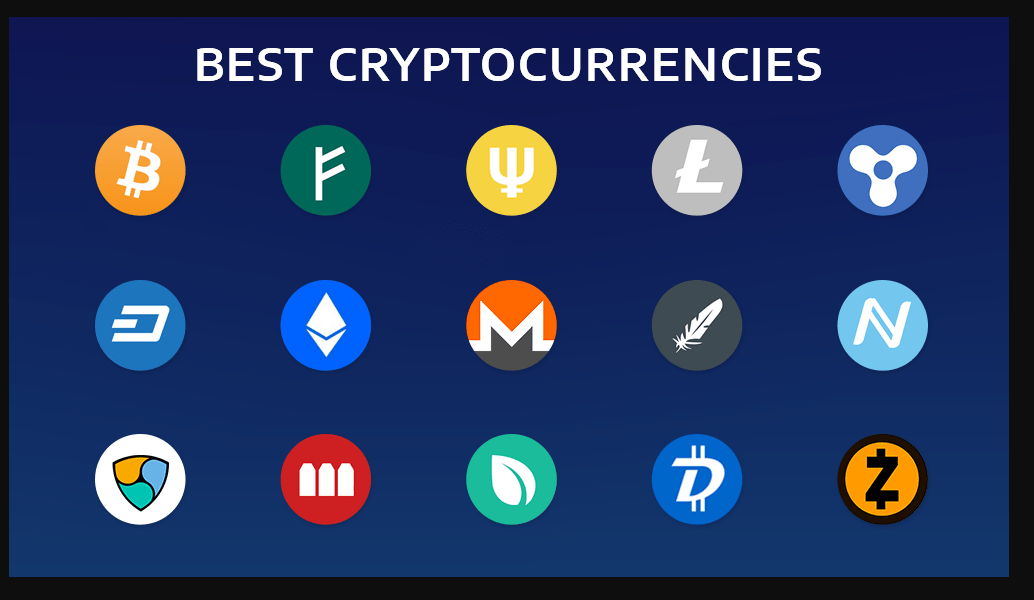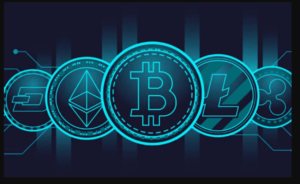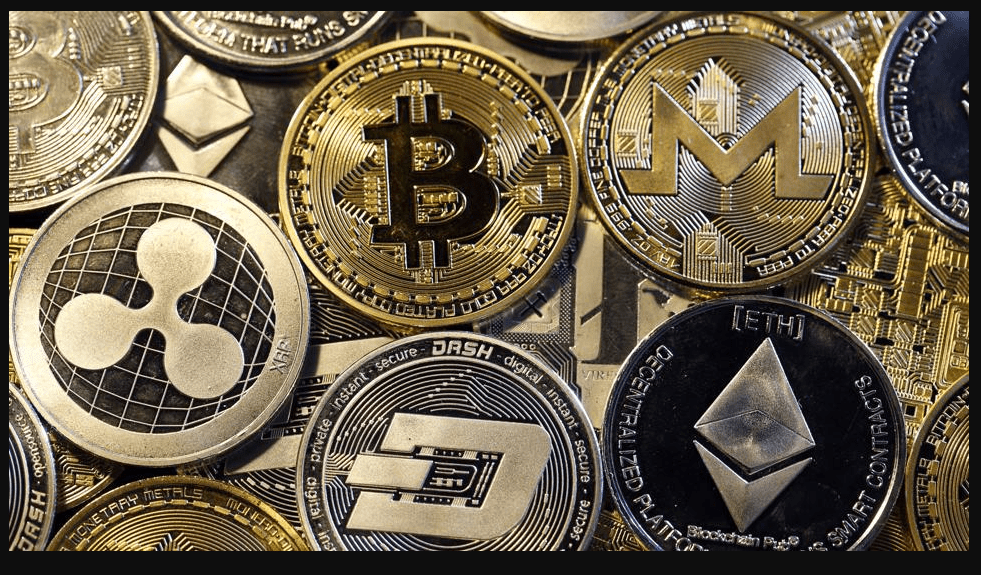
Best Cryptocurrencies To Invest;- A cryptocurrency, also known as a crypto-currency, crypto, or coin, is a digital money that functions as a means of exchange over a computer network and is not supported or maintained by any central authority, such as a government or bank.
10 Best Cryptocurrencies To Invest In for 2023

Among of the 10 best cryptocurrencies are: Bitcoin | Ethereum | Binance Coin (BNB) | Cardano | Polygon | Version 2.0 of Terra | Avalanche| Chainlink | Doge Coin | Tron (TRX)
Cryptocurrency is a form of digital money that is not controlled by a central authority, such as a government. It is instead based on blockchain technology, with Bitcoin being the most widely used. As the use of digital money grows on Wall Street, more possibilities become accessible. Currently, there are over 19,000 cryptocurrencies available on the market. Best Cryptocurrencies To Invest
While bitcoin can be used to make purchases, most people consider it to be a long-term investment. However, as evidenced by the recent freefall in cryptocurrency prices, especially stablecoins tethered to the US dollar, investing in cryptocurrency is risky. Before you invest, it’s critical to understand what you’re getting yourself into.
That being stated, here are eight of the most promising cryptocurrencies for investing in 2022.
Also Read: How to Make Money From Forex Trading – The Beginner’s Guide to Forex Trading
Top 10 Cryptocurrency Investments in 2022 | Best Cryptocurrencies To Invest
| CRYPTOCURRENCY | PRICE | MARKET CAP |
|---|---|---|
| Bitcoin |
$30,826.47
|
$587.23 billion |
| Ethereum | $1,886.10 | $228.51 billion |
| Binance Coin | $303.91 | $49.62 billion |
| Cardano | $0.5662 | $19.1 billion |
| Polygon | $0.6171 | $4.92 billion |
| Terra 2.0 | $6.22 | $1.31 billion |
| Avalanche | $24.91 | $6.76 billion |
| Chainlink |
$7.17
|
$3.35 billion |
Doge Coin $0.0717 $9,526,690,337
Tron (TRX) $0.0770 $7,163,303,015
Best Cryptocurrencies To Invest

1. Bitcoin (BTC)
Bitcoin has the longest history of any cryptocurrency. With a price and market size far larger than any other crypto investment option, it’s clear to see why it’s the leader.
Bitcoin is already accepted by a large number of businesses, making it a wise investment. Bitcoin is accepted by Visa, for example. Stripe is also allowing clients to accept bitcoin payments after a four-year sabbatical. Larger banks are also beginning to include bitcoin transactions in their services.
Tesla briefly accepted bitcoin, but it may do so again if bitcoin mining becomes more ecologically friendly. According to CNBC, Blockstream and Block, formerly known as Square, are constructing a bitcoin mine in Texas that will be powered entirely by Tesla’s solar array and Megapack battery.
The Luna Foundation Guard said in May that it will make $1.5 billion in loans denominated in bitcoin and terra USD to stabilize the latter, according to Fortune.
Also See: Five Steps on Making Your First Trade in Forex
Investing in Bitcoin Comes With Risks
Bitcoin’s value is notoriously volatile. During any given month, the price could fluctuate by thousands of dollars. That has certainly been the case so far this year, as bitcoin prices have connected with the Nasdaq, according to CNBC, casting doubt on previous predictions that bitcoin would function as an inflation buffer.
If you’re worried about dramatic changes like these, you might want to stay away from bitcoin. Otherwise, as long as you remember that cryptocurrencies could be a solid long-term investment, these price changes shouldn’t be too alarming, and the current low price could be a good time to buy.
Another reason to think twice about investing in bitcoin is its high cost. Most people can’t afford to acquire full bitcoins because they cost over $30,000 each. This is a drawback for investors who want to avoid buying a fraction of a bitcoin.
2. Ethereum (ETH)
Ethereum is a network that allows programmers to build their own currencies and use it to run smart contracts. While ethereum is far behind bitcoin in terms of value, it is also considerably ahead of its rivals.
Despite the fact that it was released years after certain other cryptocurrencies, it has significantly outperformed its market position due to its unique technology. It is the most widely used blockchain and the second-largest cryptocurrency in the world, after bitcoin.
Once an upgrade dubbed “The Merge” is fully launched, it stands to gain much more ground. The upgrade, which is set to take place in August, will convert Ethereum to a proof-of-stake consensus, reducing the number of tokens and making mining redundant. The Merge is also predicted to cut Ethereum’s energy consumption significantly.
Traditional businesses are embracing ether, despite the fact that it lacks the popular support that bitcoin enjoys. According to The Wall Street Journal, Fidelity is beefing up its IT personnel in order to build the infrastructure needed to offer ethereum custody and trading services to its consumers.
Must Read: How to Make Forex Trading Easier and More Profitable
Investing in Ethereum Comes With Risks
While the Ethereum network makes use of blockchain technology, there is currently just one “channel” for transactions. When the network is overcrowded, this can cause transactions to take longer to process. The cost of transactions is likewise considerable. Due to increasing demand for block space, the “gas” price — the amount of ether required to complete a transaction on the Ethereum blockchain — increased 13 percent in March, according to CoinDesk.
The question of security has also arisen. In 2016, for example, a hack exploiting a security hole resulted in the loss of almost $50 million in ether. After the creation of a parallel blockchain that operates alongside Ethereum’s mainnet in May, the network faced a security vulnerability. Users were not affected because the blockchain was on a test network. The final Merge upgrade is designed to improve the security of the blockchain.
3. Binance Coin (BNB)
Binance coin took off at the start of 2021, rising from around $38 on January 1 to an all-time high of $683 in May, after years of relatively stable values, at least by cryptocurrency standards.
Binance coin has shown to be one of the more solid investment options — relatively speaking — due to its performance over time. It’s the native token on Binance, according to CoinMarketCap, the world’s largest cryptocurrency exchange, as well as Binance.US, the version that U.S. citizens must use. Binance coin, despite its wide functionality and success in Binance sub-projects, is still a very risky investment.
Binance has suspended deposits and withdrawals for various networks, including Polygon and Solana, while it completed updates, which investors should be aware of. The most recent, on April 8, had no impact on airdrops, which are prizes based on a proportion of customers’ deposits.
Investing in Binance Coin Comes With Risks
The fact that Binance Coin was founded by a company rather than a bunch of software developers, and that it is the native coin on the world’s largest exchange, sets it different from its competitors. Despite the fact that Binance Coin’s commitment to maintaining a solid blockchain has won over many critics, some investors are still wary of the cryptocurrency’s possible security vulnerabilities.
4. Cardano (ADA)
For numerous reasons, the Cardano network has a smaller footprint, which appeals to investors. On Cardano, completing a transaction takes less energy than on a larger network like Bitcoin. As a result, transactions are both speedier and less expensive.
Last year, Cardano released a “hard fork,” a software upgrade that adds new features, such as the ability to deploy smart contracts. As a result, the network is experiencing higher activity, which may cause the price of its coin to rise.
Investing in Cardano Comes With Risks
Cardano may not be able to compete with larger cryptocurrencies, even with a better network and the enhanced functionality smart contracts bring. Fewer developers means fewer adopters. Most investors want to see a high adoption rate, thus this isn’t tempting to them.
The platform has ambitious aspirations, such as opening an incubator to help Africa realize its potential as a major economy, but it’s unclear whether it’ll be able to deliver on those promises.
Read Also: Forex” and “Foreign Exchange Market”
5. Polygon (MATIC)
Polygon was established by a group of developers who contributed significantly to the Ethereum blockchain platform. According to CoinMarketCap, Polygon is intended for Ethereum scaling and infrastructure development. It expands Ethereum into a multi-chain system as a “layer two” solution, allowing for faster transaction and verification speeds.
Binance and Coinbase, two cryptocurrency exchanges, have backed Polygon. MATIC, the company’s token, is utilized for payment services, transaction fees, and settlement.
AMB Crypto announced on April 9 that Zo World, a decentralized travel startup, has launched its non-fungible token and other digital assets on Polygon, which could improve MATIC values. Those who purchase those assets also become owners of Zo Metaverse real estate. More importantly, according to CoinTelegraph, an Indian state government is utilizing Polygon to issue caste certificates to assist deliver government benefits to over 1 million low-income individuals.
According to a post on Polygon’s blog, the number of decentralized applications hosted by the company has increased by 500 percent since last October. Polygon completely supports the tether stablecoin as of last week, which could help the network thrive in the future.
Investing in Polygon Comes With Risks
Polygon said late last year that it has corrected a vulnerability that put nearly $20 million worth of its currencies at danger, according to CoinDesk. A hacker spotted the flaw and alerted Polygon, which implemented a remedy within two days. Black-hat hackers, on the other hand, have already stolen over 800,000 tokens, leaving Polygon with a $1.4 million debt.
6. Terra 2.0 (LUNA)
According to CoinMarketCap, the Terra Classic blockchain employed stablecoins to support global payment networks, which are coins tied to fiat currencies like the US dollar, South Korean won, and the International Monetary Fund’s Special Drawing Rights currencies. The prices of the blockchain’s stablecoins were stabilized by its native coin, currently known as LUNC.
Terra, on the other hand, suffered a sharp drop in early May, owing to stablecoin volatility and general market jitters, putting an end to the cryptocurrency’s great year.
In a bid to stabilize the Terra ecosystem, Terra rebranded itself as Terra Classic (LUNC) and released Terra 2.0 (LUNA), a new blockchain without an algorithmic stablecoin, according to The Block. Terra Classic is the new moniker for the original network, and its LUNC coins will trade separately from the LUNA that come with Terra 2.0.
Investing in Terra 2.0 Comes With Risks
Terra use LUNC to keep the value of its stablecoins stable, placing it “at the heart of the shock absorption mechanism,” according to Matt Hougan, chief investment officer of Bitwise Asset Management. If Terra’s stablecoins lose their pegs to fiat currencies, then-performance LUNA’s could suffer, according to Hougan. That risk was realized in early May, when UST “depegged” many times over several days, leading terra’s price to plummet.
The new LUNA has yet to be tested, but it may be worth keeping an eye on.
7. Avalanche (AVAX)
According to Binance, Avalanche is a relatively recent “layer one” blockchain, which modifies the fundamental protocol to make the system more scalable. According to CoinMarketCap, it was established as an Ethereum competitor by Ava Labs and Cornell University computer experts, one of them, former professor Emin Gün Sirer, is a cryptographic research veteran.
Unlike Ethereum, where all nodes must approve each transaction, Avalanche’s three blockchains can approve transactions individually. This improves Avalanche’s scalability and ability to handle high transaction volumes – up to 6,500 per second. As a result, according to U.S. News, it’s becoming more popular among Ethereum projects.
In terms of the coin itself, according to Bloomberg, avalanche beat over ether as Terra’s reserve currency for its own UST stablecoin on April 7. As part of the strategy, the Luna Foundation Guard, a non-profit organization that supports Terra, planned to acquire $100 million worth of weapons.
AVAX began trading in a 24-hour initial coin offering (ICO) in 2020. Over the last year, its price has ranged from $9.34 to $146.22. The coin is currently worth $24.91 as of June 1.
Investing in Avalanche Risks
In 2018, Sirer published a white paper introducing the cryptocurrency. It was launched in the year 2020. Because avalanche has such a young history, it lacks a track record to compare it to, making it a riskier investment for potential buyers.
8. Chainlink (LINK)
According to CoinMarketCap, Chainlink uses a decentralized oracle network to enable secure interactions between blockchains and external data feeds, events, and payment methods, with the developers hoping that smart contracts would become the main form of digital payment.
According to Benzinga, one factor working in Chainlink’s favor is a strategic agreement with Google, which employs Chainlink’s protocol to connect users to its cloud services. According to Securities.io, the project’s advisors include former Alphabet Chairman Eric Schmidt, DocuSign co-founder Tom Gonser, and former LinkedIn CEO Jeff Weiner.
Chainlink is also the platform of choice for Truflation, a decentralized financial business that is developing a new inflation index to replace the consumer price index. Unlike the CPI, which uses survey data to calculate inflation, Truflation’s index will employ price data in conjunction with the CPI’s calculating approach, according to CoinDesk. The Truflation index is intended to be more precise, transparent, and censorship-resistant than the CPI.
Risks of Investing In Chainlink
Despite its demonstrated utility and widespread acceptance, chainlink has been subjected to the same level of volatility as other cryptocurrencies. Its cost fell from almost $20 on January 1 to slightly over $7.10 on June 1.
9. Dogecoin: (DOGE)
Dogecoin is an open source peer-to-peer digital currency, favored by Shiba Inus worldwide.
10. Tron (TRX)
TRON (TRX) is a decentralized blockchain-based operating system developed by the Tron Foundation and launched in 2017. Originally TRX tokens were ERC-20-based tokens deployed on Ethereum, but a year later they were moved to their own network.
Rating the Top Cryptocurrency Choices
You can get plenty of advice about how to invest in cryptocurrencies by conducting a quick online search. The following considerations were taken into account when selecting the top eight options.
Longevity
What is the history of cryptocurrency? New cryptocurrencies aren’t ruled out right away, but having historical data to compare to allows you to evaluate how a company has performed in the past.
Record of Achievement
What has been the company’s performance over the years? It’s a positive indicator if prices remain consistent. It’s even better if you observe that the cryptocurrency is gaining traction and getting more valuable over time.
Technology
In terms of usability and security, how does the platform compare to others? The speed with which transactions are completed is the first thing you should check for. The network should have no trouble handling transaction traffic.
You should also ensure that your investment is safe. Blockchain technology is used by the majority of cryptocurrencies, making all transactions transparent and easy to follow. The use of blockchain technology does not always make it more difficult for hackers to steal your cryptocurrency. It makes it easier to trace your money so that it can be recovered rather than lost due to fraud.
Rate of Adoption
How many individuals are interested in the cryptocurrency you’re thinking about investing in? When a cryptocurrency has a high level of acceptance, it suggests it has better liquidity. In the future, trading, selling, and spending will be simpler.
Conclusion
Cryptocurrencies are here to stay, there’s no doubt about that. The question then becomes, where is the finest spot in the market to invest your money?
Here are some other points to consider as you decide which cryptocurrency is the best investment for you:
- The time it takes for a transaction to be executed.
- Transaction fees are the costs associated with completing a transaction.
- The ability to make regular transactions and bank transfers with your cryptocurrency
If you’re only interested in investing and not transacting on the network, keep in mind that bitcoin isn’t a get-rich-quick scam. Instead, think of it as a long-term investment.

Be the first to comment